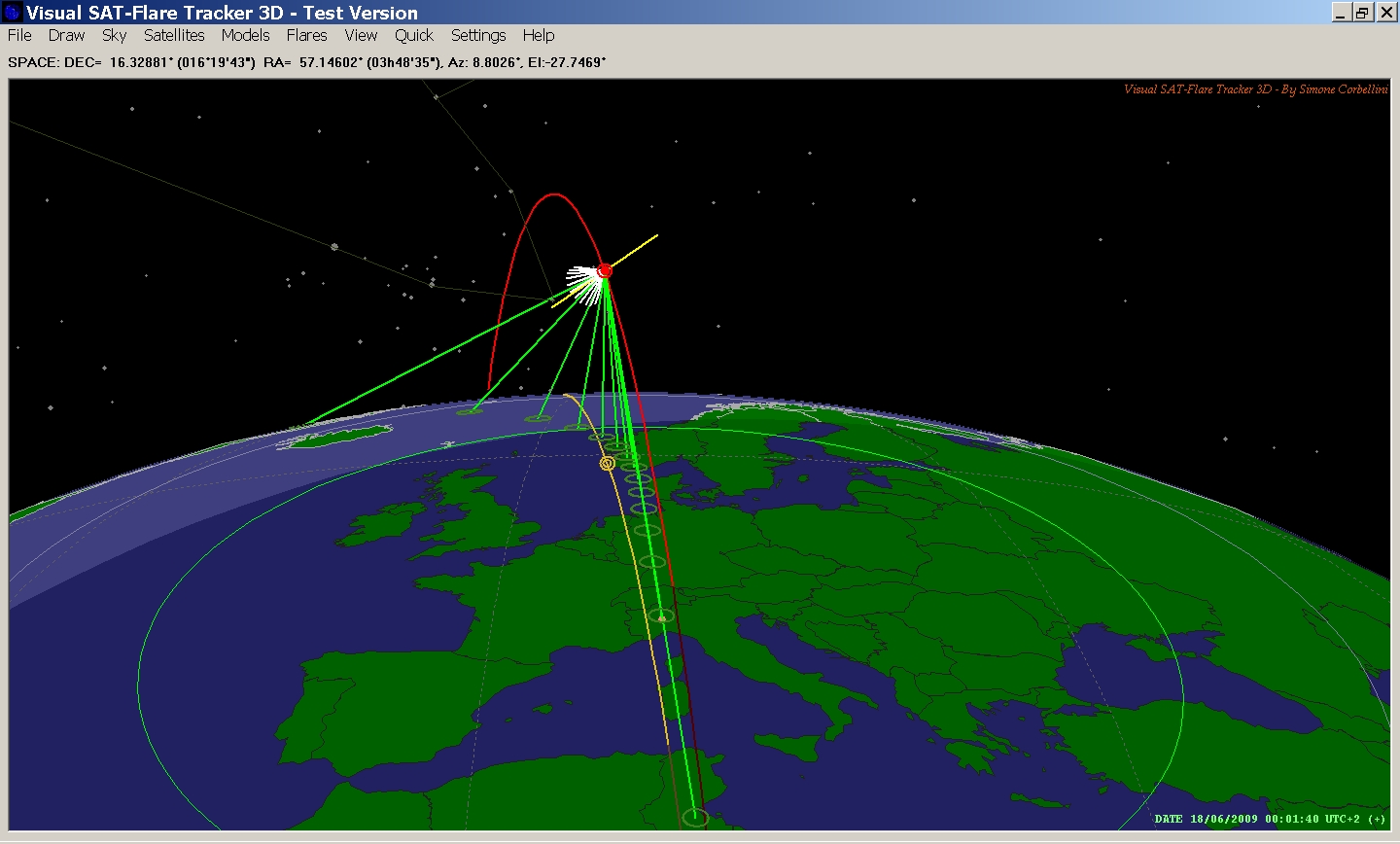
Tracker 3D
 | Visual SAT-Flare Tracker 3D |
SITE MAP DAYLY
PREDICTIONS NEED
INFORMATION? GET IN TOUCH
НАПИШИ МНЕ
|
IRIDIUM 33 POST COLLISION MODELS Post-Collision Rotating IRIDIUM 33 Model and Flash Predictions - 13 June 2009 Despite
the collision, which took place on the 10th of February 2009, the
Iridium 33 was not completely destroyed and bright flashes can be still
observed from its intact Main Mission Antennas. So far, only one
surface has been observed flashing (March
2009),
but according to my main model, there could be a second intact MMA that
should be visible these days and that was hidden during passes in
March. If the model was correct, this might suggest that the Cosmos
satellite may have collided mainly with the front antenna of the
Iridium satellite, keeping the Right and the Left MMAs intact.
Current State - 28
June 2009Preliminary observations have showed that flashes are generated again these days, however, more data are necessary to confirm that flashes are really generated by another reflective surface and not again from the one observed in March.
Post-Collision Rotating IRIDIUM 33 Model and Flash Predictions - 28 June 2009 On the 17th of June, 18 consecutive bright flashes (negative magnitude) have been observed for about 1 minute and a half (read the report). By using the collected data, the satellite's rotation axis has been estimated again. The following 3D picture represents the satellite during the observed pass with its rotation axis and the rotating mirror normal (click on the picture to enlarge it).  The rotation axis was pointing toward the LEO constellation, approximately at the celestial coordinates: DEC= 16°, RA= 164°. The
following pictures show the flash gound track, for two satellite
positions, that should be currently generated. However, flashes have
been already observed and reported only from the right part of this
track (here
a report).
Flashes
are easily visible naked eye, since they could be
even brighter
than the magnitude -4.
By Simone Corbellini |
|